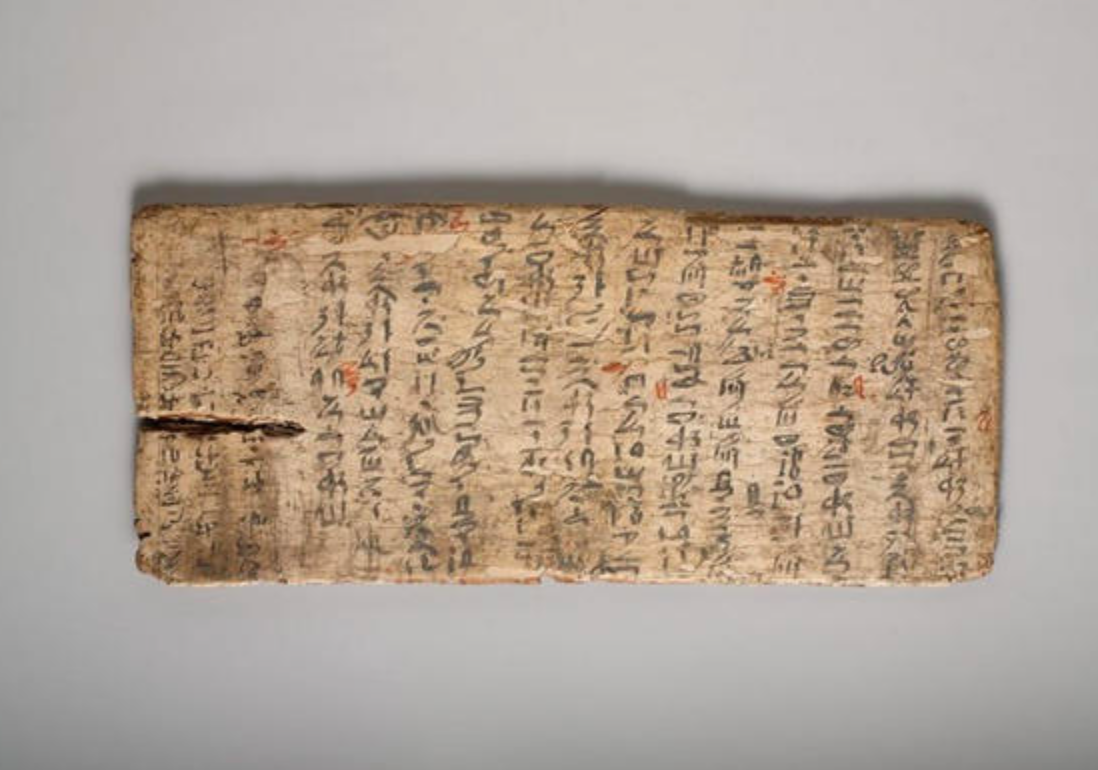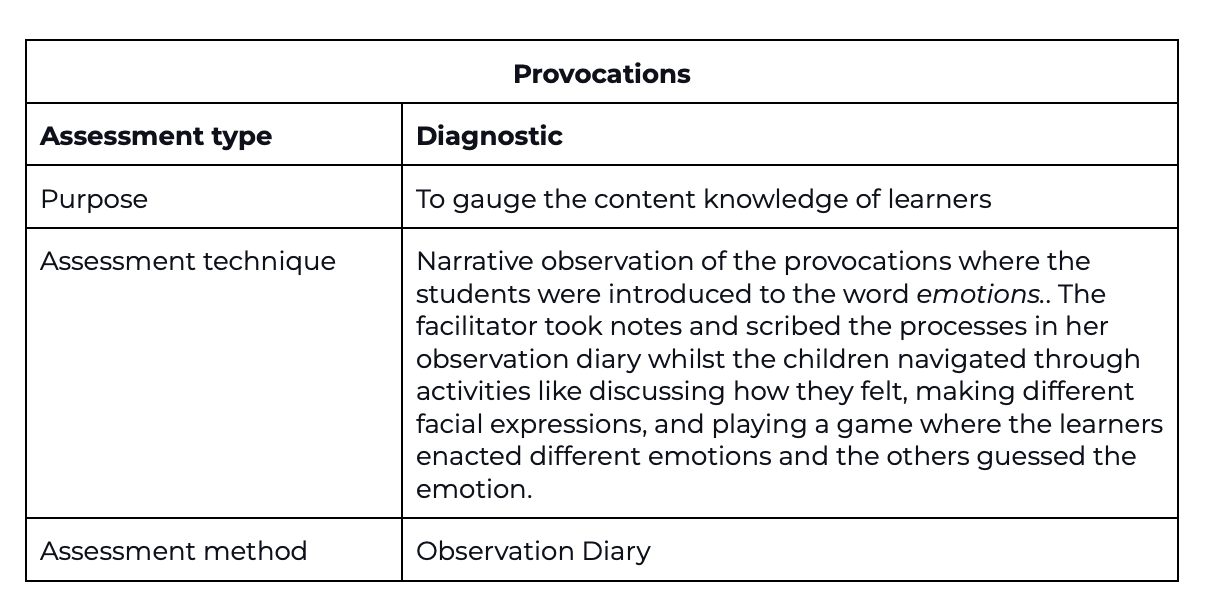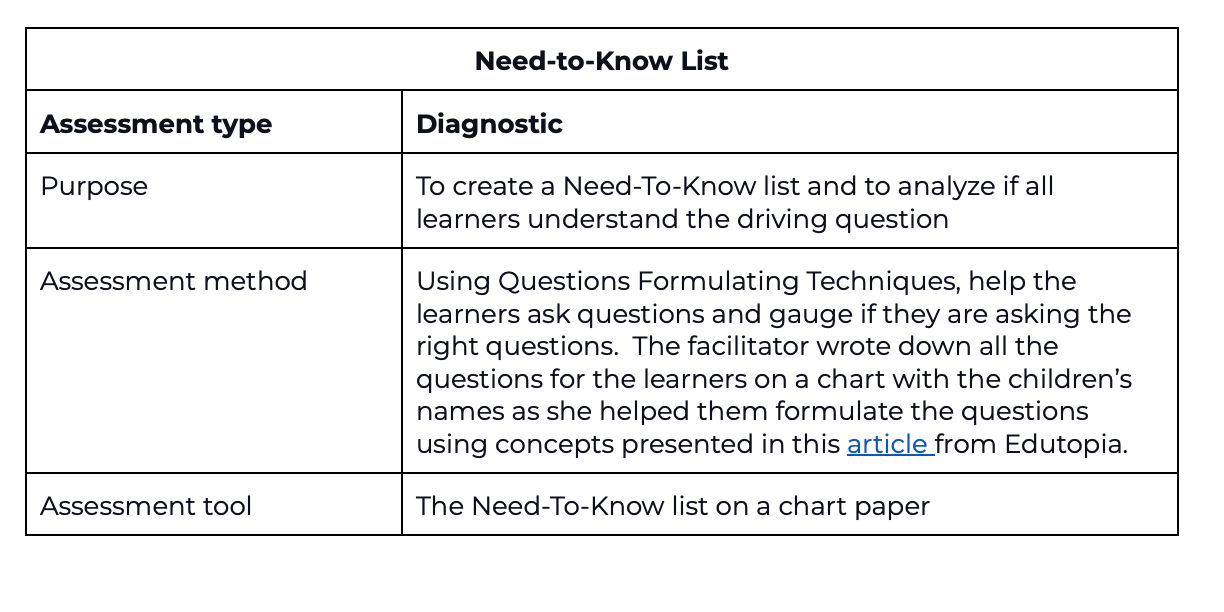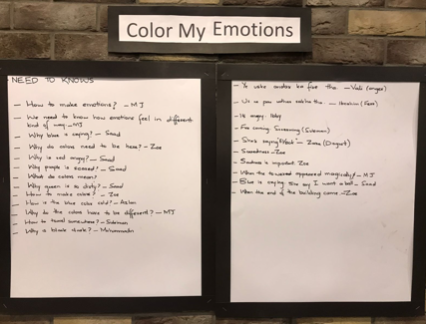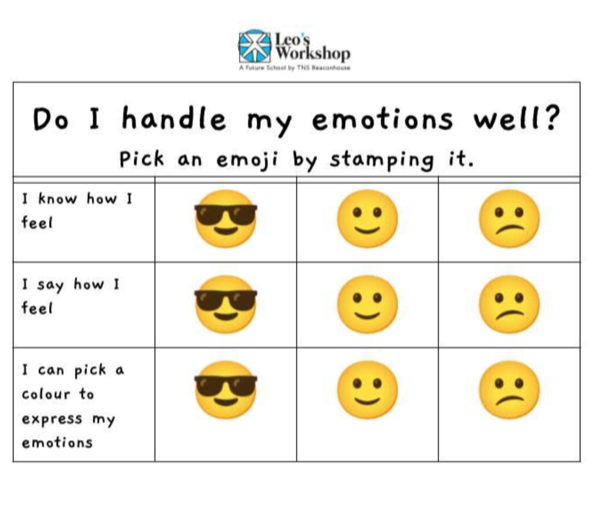Assessments in Early Childhood PBL
As Project-Based Learning becomes more popular around the globe, more and more educators are advocating for the authenticity it adds to learning and teaching. At the same time, there is a general notion by some stakeholders that project-based learning lacks ‘rigor’ because the assessments may not necessarily reflect scores and numbers. However, there are many ways to accurately assess student learning in PBL with young children. And when assessments are carefully planned and embedded throughout the inquiry process, they can transform the educational experiences and make learning long-lasting, learner-centered, and more authentic.
The photo below (taken from this article) shows what a homework assessment looked like in Ancient Egypt, done and assessed on a student’s writing board from the Middle Kingdom period, circa 1981–1802 BCE. The red marks are those of a teacher correcting their student (The Metropolitan Museum of Art.)
Homework assessments like this and standardized testing used to be the only way of assessing students. It is quite worrisome that even now, in most parts of the world, we still follow the same practice. With the world advancing towards virtual reality and deep technological experiences, we are still measuring all learners on the same merits as we did some years ago. Realistically, since all learners are unique, their learning progress can not be measured with one defined tool. Project-based learning gives a brilliant solution to tackle this huge problem faced by many in educational systems.
Assessments in Early Childhood Project-Based Learning are an ongoing process. It is about tuning in to the child. They are designed to inform instruction and monitor the way a child’s learning progresses. A series of recorded and unrecorded assessments are done to gauge the learners’ understanding of the key content, application of the knowledge gained, and enhancement of the essential skills that are needed in the future. They are done to keep updating and personalizing a learner’s learning path. In her book Early Childhood Education (2015), author Tina Bruce suggests quality education is about three things: the child, the context in which learning takes place, and the knowledge and understanding that the child develops and learns. As a teacher, this means that I need to think about the key knowledge and understanding I want my students to develop in a project and the types of assessments I can use to identify what is being learned.
Types of Assessments:
The whole assessment process to maintain the quality of education for a child can be divided into three major chunks; Diagnostic Assessments, Formative Assessments, and Summative Assessments.
Diagnostic Assessments (Before a learning experience):
Diagnostic Assessments are done prior to the start of a learning experience. You can do a diagnostic assessment at any stage of a PBL unit, to assess the prior knowledge, skills, interests, or concepts of the learners. The feedback given is mostly informal. Some examples of diagnostic assessments in early childhood include creating a Knows or Need-to-Know List with the children (needs to have a lot of visuals), Response Cards (e.g The teacher asks a question to gauge understanding of a topic at the start of an investigation and children respond with an emoji card), Low-stake polls on Seesaw where the children drag and drop blocks to pick a colour, yes/no, tick/cross images or thumbs-up responses, etc.
Formative Assessments (During a learning experience):
Formative Assessments are done during a learning experience. The feedback given depends on the nature of the assessment. It could be in the form of informal comments, a highlighted checklist, or a rubric graded by the learner, peer, or facilitator. Formative assessments are done to monitor the learning paths, provide feedback, improve learning and instructions, and to gauge the progress of the project’s flow. Some examples of formative assessments in early childhood include drawing an illustration, casual chit-chat with the students with responses recorded, a child reflecting on a learning experience recorded by a video or transcribed by facilitator, and assessing student work using a small visual checklist. Children doing role-playing to enact the understanding of a process or a story is another formative assessment opportunity. “Two Stars and a Wish” provides students with a structure for offering peers feedback. The video Austin’s Butterfly models for children the power of critique and revision. Formative assessments give insights into the students’ learning processes and mark each milestone achieved during the process.
Summative Assessments (To sum up a learning experience):
Summative Assessments are usually done at the end of a project. The public products are a part of the summative assessments and are usually measured against a benchmark or success criteria agreed upon or co-created by the facilitators and learners. The feedback given is formal. It could be a set of graded rubrics, feedback from an authentic audience, or even a grade for older learners. Some examples could be a documentary, a presentation, artwork display, documentary, podcast, discussion panel, a real-world product, an analysis, etc.
A Project-Based Learning inquiry engages students in a learning process for achieving mini-goals and setting milestones to achieve a bigger goal at the end. It’s important to assess and record the evidence of learning and teaching for every individual student and the whole group at every milestone. All the evidence can be compiled in a handmade or digital format to present the progress of learning in the form of a portfolio or a learning story. Here are a few examples from a recent project we designed for our youngest learners.
Assessment in Early Childhood PBL
Project Summary:
In this project, our 3-5 year old learners explored the concept of expressing their emotions. We launched the inquiry process with some provocations to introduce the word emotion. Building on that, the children identified their emotions and learned how they and other people feel and express themselves through various activities. The children were introduced to the idea that emotions can be expressed through colors. They engaged in an artist study of Jackson Pollock, learning about primary and tertiary colors. The children created their own pieces of art that reflected their emotions. All children reflected on their artworks and created video notes to talk about why they chose the particular colours to create artwork and how they were feeling at the time of creating the artwork.
Project Title: Colour My Emotions
Driving Question: “How can we use colours to express our emotions?”
Age Group of Learners: 3-5 years old
Subjects Integration: Arts, Music & PSHE (PSHE is Personal, Social, Health and Economic Education)
There were many assessments consciously planned and embedded in the planning of this project. We designed assessments to either gauge if we have achieved a milestone in terms of academic learning targets, or to assess if we are on track in terms of the project flow and connections made. Some of the assessments during our inquiry process were as follows:
Evidence from all these assessments were recorded in a digital portfolio made on Google Slides, and a learning story of the project’s journey was shared with the parents and visitors via QR codes.
Throughout the project cycle, the assessments were done to either assess if the learning targets were being achieved or to check if the right connections were being made. All the involved facilitators met regularly to evaluate what the children were being offered, how it met their needs, and to look at what must be changed or adapted to plan the next steps of their learning journey.
Ayesha Inam is a STEM Education Specialist. She is currently designated as the Head Facilitator at Leo’s Workshop, which is an innovative and first-of-its-kind K-5 micro school in Pakistan. She is the Founder and Creative Director of The STEM Lab Pakistan, an organization that promotes and inculcates the love for Science, Technology, Engineering and Mathematics in young children, especially young girls. She loves interacting and engaging with children helping them learn how the world works through gamification, game-based and play-based activities. In her lesiure time, she likes to read books, perform crazy science experiments with her two kids and meditate whenever she can.

